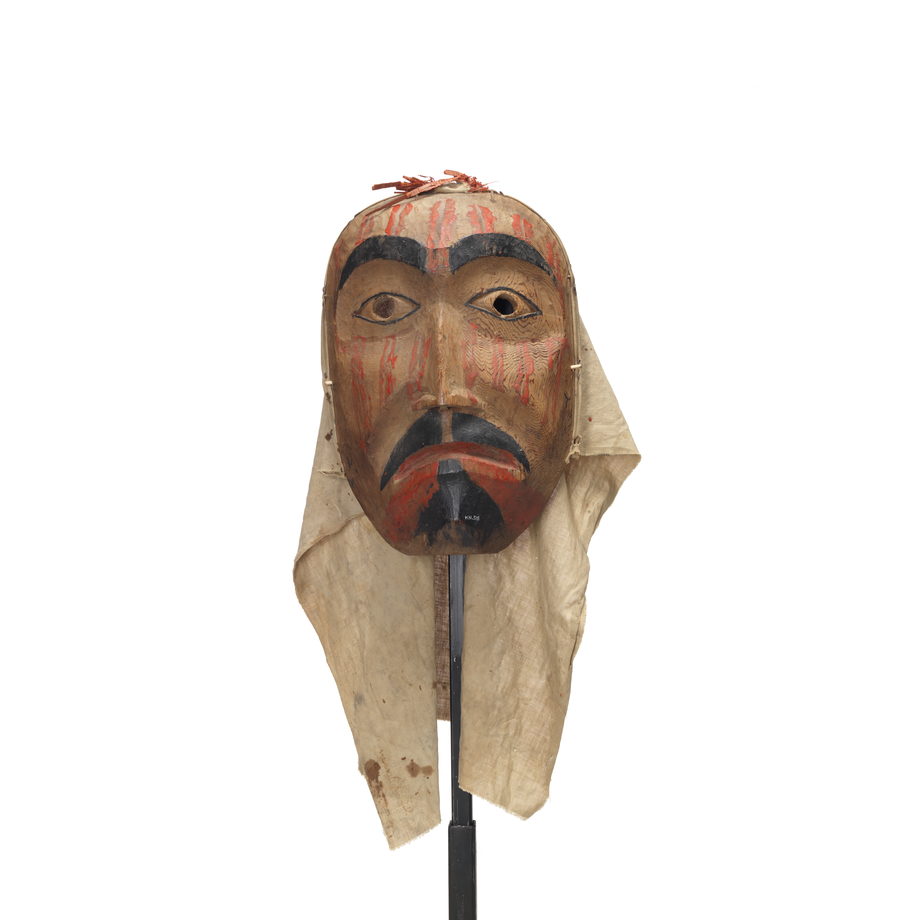K´wasanuma
Mourning Mask
More Information
The Winter Ceremonial celebration was introduced by a solemn period of mourning songs to commemorate those who had died during the preceding year. During the ceremony, members of the deceased’s family would wear mourning masks and sing each person’s songs. Women were usually the professional mourners and were paid to lament the loss of a loved one. However, these masks, with mustaches and goatees, appear to be men. When the masks were returned to U’mista, the community elders decided that they were mourners because males, at times, do represent mourners. The red streaks represent self-abrasions to show feelings of grief or possibly they symbolize actual tears streaming down the face. These four mourning masks appear to be a set, although one is distinct enough to suggest that it was produced by another carver or by the same carver at a different time.
Catalogue Information
Materials
Wood, Cedar; Cloth, Cotton; Bark, Cedar; Paint; Metal, Nails
Dimensions
22.0 cm x 33.0 cm x 9.0 cm
Accession Number
88.06.010
Physical Description
Mourning mask carved out of red cedar and left natural. The eyebrows, eyelids, moustache and goatee are painted black. The forehead has red painted double lines that represent blood streaming down and continue after the eye sockets onto the cheeks. This blood symbolizes self-inflicted wounds that are a sign of grief and mourning. The lips are slightly frowning and also painted red. The eyes are carved through for sight holes. The mask has dyed red cedar bark attached to the top of its head to indicate that it belongs to the T´seka ceremonies. This mask also has the remnants of a cotton cloth that was nailed to the top rim to conceal the wearer’s head.
